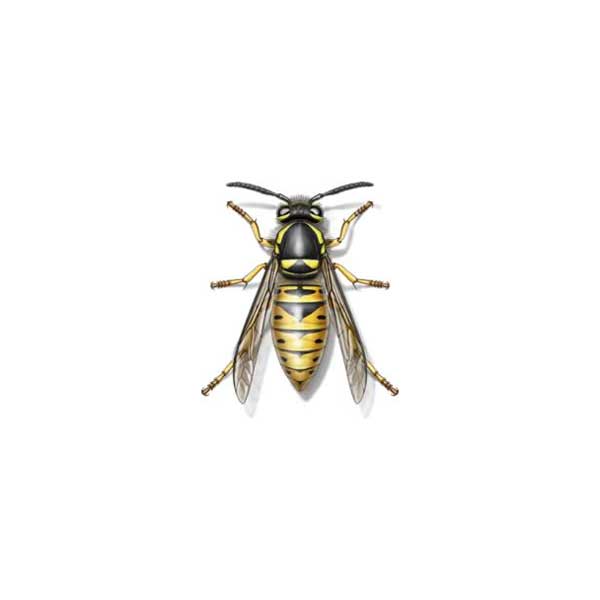Yellowjackets in Albuquerque NM
Out of all wasps, yellowjackets are the most known, especially here in New Mexico. Especially in the late summer and fall months, yellowjackets are in abundance and tend to get more aggressive. These wasps live in colonies of thousands of members and feed on fruit juices and other sweet liquids. Their larvae, on the other hand, are fed bits of soft-bodied insects such as caterpillars or flies. Yellowjackets can nest in the ground, or build nests in structural voids, attics, cavities, porches, and more. They are known to be mostly black in color with yellow bands and markings.
Yellowjacket Nests & Habitat
There are two types of yellowjacket nests: underground, and above ground. Ground nesters often use old rodent burrows or other cavities; these underground nests can contain thousands of insects. Above ground nests are found among the leafy branches of trees and shrubs and also on structures. Occasionally, the nest may be constructed on the side of a building, in wall voids, under eaves, crawlspaces and attics. The entrance of the nest is normally a hole located at the bottom. These aerial nesters don’t become scavengers in the fall, but they are extremely defensive when their nests are disturbed or endangered.
Yellowjacket Behaviors & Stings
Like most wasps, yellowjackets will not sting unless they feel their nest is at threat. However, they do tend to get more aggressive in the late summer and fall when their colonies grow and resources become sparse. The thing about yellowjackets is that they are able to sting repeatedly due to their smooth stinger. Some individuals are more sensitive than others, due to allergic reactions, and should seek medical attention when stung.
Sometimes yellowjackets living in wall voids chew their way through the drywall and enter the structure’s living space. Naturally, the presence of large numbers of wasps flying around the room can be alarming to homeowners. Whether you have a yellowjacket nest outdoors or have noticed them forming around your home, always contact your local wasp control company for assistance.
Need help with yellowjackets?
We'll call you! Leave your information below.





